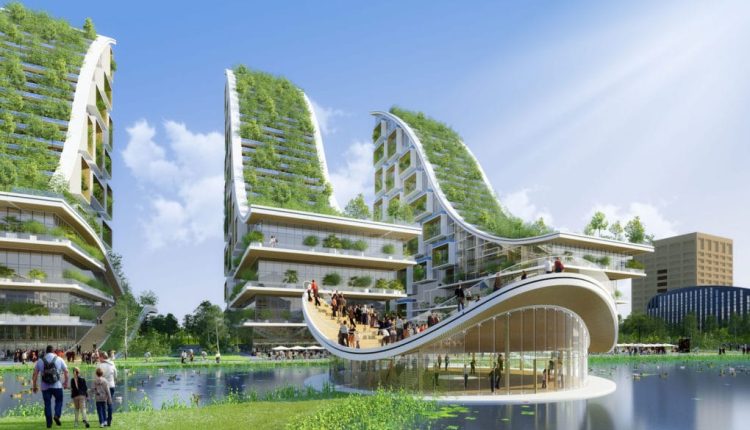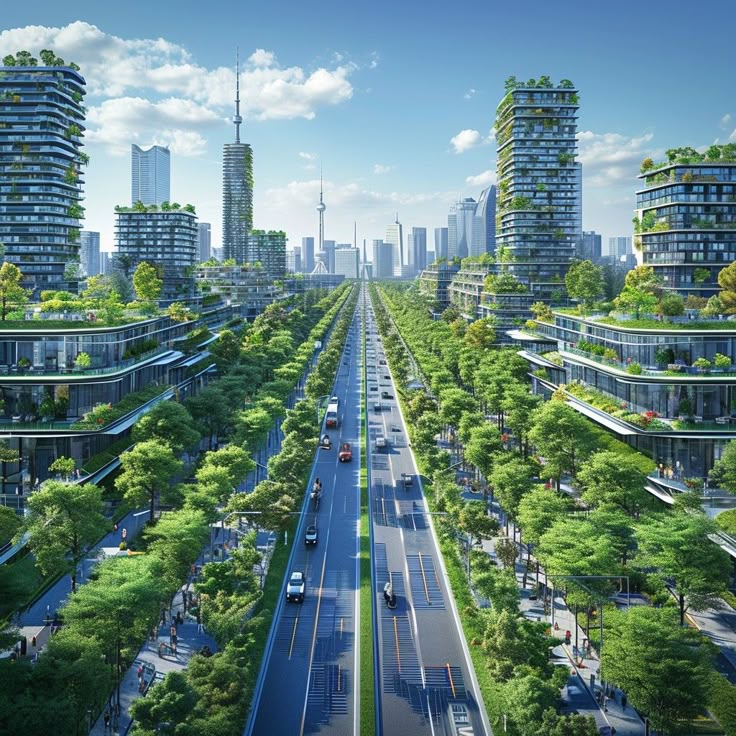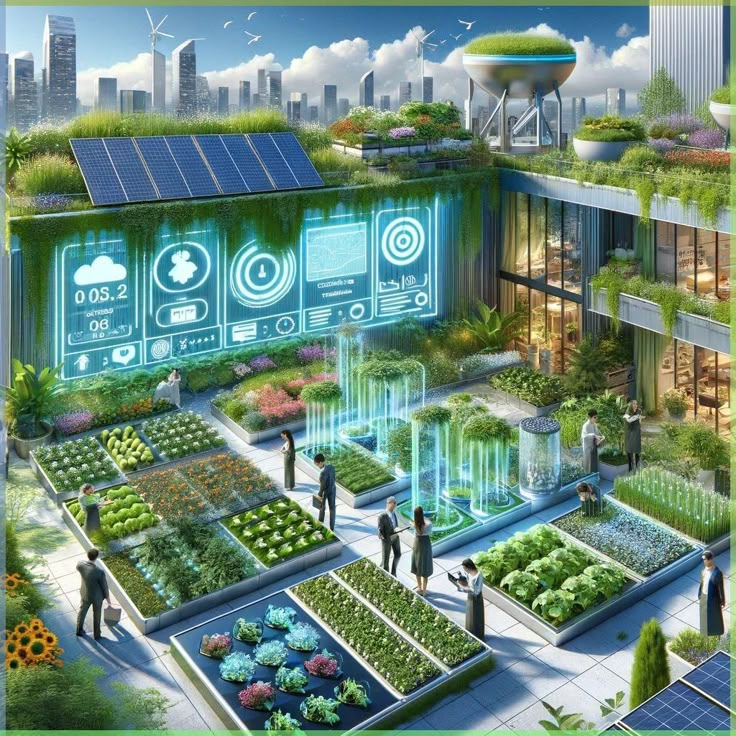Urban Design Solutions for Climate Change Mitigation
Introduction
Urban areas play a crucial role in climate change mitigation. With over half the world’s population residing in cities, adopting sustainable urban design can significantly reduce carbon emissions and improve resilience.
Point covered
- Green Infrastructure
- Energy-Efficient Buildings
- Climate-Resilient Urban Spaces
- Water Conservation
Conclusion
1.Green Infrastructure
![]()
Urban forests, green roofs, and permeable pavements help combat the urban heat island effect, improve air quality, and manage storm water.
2.Energy-Efficient Buildings
![]()
Sustainable architecture goes beyond aesthetics, focusing on integrating energy-saving techniques and materials to reduce carbon footprints. Passive design strategies, such as optimal building orientation, natural ventilation, and daylighting, minimize energy consumption while enhancing occupant comfort. Advanced energy-efficient materials, including insulated glass and reflective roofing, further reduce heat absorption. Smart technology, like automated energy management systems and IoT-enabled devices, ensures that resources are used efficiently. Together, these innovations not only lower operational costs but also contribute significantly to the global effort to combat climate change.
3.Climate-Resilient Urban Spaces
Urban spaces must evolve to withstand the increasing frequency and intensity of extreme weather events caused by climate change. Flood-resistant infrastructure, such as elevated buildings, permeable surfaces, and advanced stormwater drainage systems, protects against flooding and water damage. Shading systems, including tree canopies and solar-reflective materials, combat urban heat islands while offering comfort for pedestrians. Multi-functional public spaces that integrate parks, social hubs, and disaster shelters provide communities with both leisure and safety. By prioritizing resilience in urban planning, cities can ensure sustainability, safety, and livability for their growing populations.
4.Water Conservation

Rainwater harvesting, greywater recycling, and smart water grids ensure sustainable urban water management.
Conclusion
Urban Design is one of the most pressing challenges of our time, affecting ecosystems, economies, and communities worldwide. Addressing urban design requires a collaborative effort that integrates science, policy, and innovation to create sustainable solutions.
For researchers, environmentalists, and policymakers, the ” Climate Change and Environmental Sustainability (CCES) 5th Edition ” Conference is a must-attend event! Taking place online from July 14–16, 2025, this event will gather leading experts, scientists, and thought leaders to discuss the latest advancements in urban planning, sustainability strategies, and global policy initiatives aimed at fostering resilient and livable cities.
Join this global dialogue on sustainable urban design, where groundbreaking research and innovative solutions come to life!
Discover more about the CCES Conference here: 🔗 https://www.ierek.com/events/climate-change-and-environmental-sustainability-cces-5th-edition#introduction





